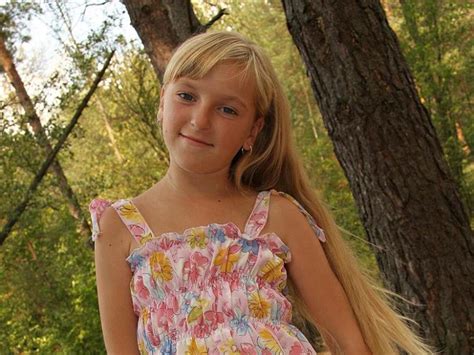The Ultimate Guide to Art Modeling: Unlocking Your Creative Potential
Introduction
Art modeling is an expressive art form that combines creativity, skill, and physicality. It involves creating poses and movements to convey emotions, ideas, and narratives in artistic mediums. Whether you're an aspiring model, artist, or simply curious about the world of art modeling, this comprehensive guide will provide you with the fundamental knowledge and techniques to elevate your practice.
Benefits of Art Modeling

Art modeling offers a myriad of benefits, both for models and artists:

-
Enhanced artistic expression: Modeling allows artists to explore and develop their creative vision by collaborating with a live subject.
-
Improved communication skills: Models must communicate effectively with artists to convey their ideas and collaborate on poses.
-
Increased physical fitness: Modeling can involve demanding poses and movements, promoting flexibility, strength, and coordination.
-
Personal growth: Embracing the vulnerability and exposure of art modeling can foster self-confidence, body positivity, and artistic resilience.
Choosing the Right Model
Selecting the appropriate model for your artistic vision is crucial. Consider the following factors:
-
Physical attributes: Body type, height, skin tone, and facial features play a role in suitability for specific poses and styles.
-
Personality and temperament: The model's comfort level, willingness to explore different poses, and ability to collaborate are essential.
-
Experience and skills: Professional models may have experience in specific poses or artistic styles that align with your project.
-
Cost and availability: Determine the financial compensation and availability of potential models within your budget and schedule.
Common Mistakes to Avoid
To ensure a successful art modeling experience, avoid these common pitfalls:
-
Lack of preparation: Study your poses, concepts, and compositions thoroughly before the session.
-
Poor communication: Establish clear expectations, provide detailed instructions, and actively listen to feedback.
-
Inadequate lighting: Proper lighting is crucial for creating compelling images and highlighting the model's form.
-
Stiff or unnatural posing: Encourage the model to relax, move fluidly, and convey emotions through their body language.
-
Lack of variety: Experiment with different angles, perspectives, and poses to create dynamic and engaging compositions.
Essential Techniques for Art Modeling
Understanding the Figure
Familiarize yourself with the human anatomy, including bone structure, muscles, and proportions. This knowledge will help you create realistic and expressive poses.
Body Language and Expression

Pay attention to the model's facial expressions, gestures, and body language. These elements can convey emotions, tell stories, and evoke specific moods.
Posing and Composition
Experiment with different poses and compositions to create dynamic and visually appealing images. Use lines, shapes, and the Golden Ratio to guide your composition.
Lighting and Shadow
Utilize lighting and shadow to enhance the model's form, create depth, and evoke a desired atmosphere.
Styling and Clothing
Consider the clothing, makeup, and props used in the modeling session. These elements can complement the pose and artistic concept.
Tables
Table 1: Benefits of Art Modeling for Artists
| Benefit |
Description |
| Enhanced artistic expression |
Allows artists to explore and develop their creative vision |
| Improved communication skills |
Requires effective communication with models to convey ideas |
| Expanded artistic vocabulary |
Introduces new poses, movements, and perspectives |
| Increased appreciation for the human form |
Develops a deep understanding of human anatomy and expression |
Table 2: Common Mistakes to Avoid in Art Modeling
| Mistake |
Consequences |
| Lack of preparation |
Inefficient use of time, poor results |
| Poor communication |
Misunderstandings, dissatisfaction |
| Inadequate lighting |
Flat or unflattering images |
| Stiff or unnatural posing |
Lack of authenticity, expression |
| Lack of variety |
Repetitive or uninspiring compositions |
Table 3: Essential Techniques for Art Modeling
| Technique |
Description |
| Understanding the Figure |
Studying human anatomy for realistic posing |
| Body Language and Expression |
Using facial expressions and gestures to convey emotions |
| Posing and Composition |
Experimenting with different poses to create dynamic images |
| Lighting and Shadow |
Using lighting and shadow to enhance form and atmosphere |
| Styling and Clothing |
Considering clothing and props to complement poses and concepts |
FAQs
1. What are the prerequisites for becoming an art model?
There are no formal prerequisites, but basic fitness, body awareness, and comfort in front of a camera are beneficial.
2. How can I find work as an art model?
Join modeling agencies, attend workshops or classes, and network with artists and photographers.
3. What is the average pay for an art model?
Rates vary depending on experience, location, and the project's budget. According to ZipRecruiter, the national average salary for an art model is around $19 per hour.
4. Do art models have to be nude?
While some modeling sessions may involve nudity, models have the right to set boundaries and decline poses that make them uncomfortable.
5. Is it difficult to pose for long periods?
Yes, art modeling can be physically demanding. Models must maintain poses for extended periods, which can be tiring or even painful.
6. What are the most common challenges faced by art models?
Emotional vulnerability, physical discomfort, and the potential for objectification can be challenges faced by art models.
7. How can I prepare for an art modeling session?
Study your poses, stretch your body, and arrive well-rested and hydrated.
8. What should I wear to an art modeling session?
Wear comfortable and form-fitting clothing that allows for movement. Avoid loose or flashy clothing that can distract from your poses.
Conclusion
Art modeling is a transformative and empowering art form that fosters creativity, expression, and personal growth. By embracing the techniques and principles outlined in this guide, you can become a successful art model or artist. Embrace the challenges, explore your creativity, and let the human form inspire your artistic journey.
